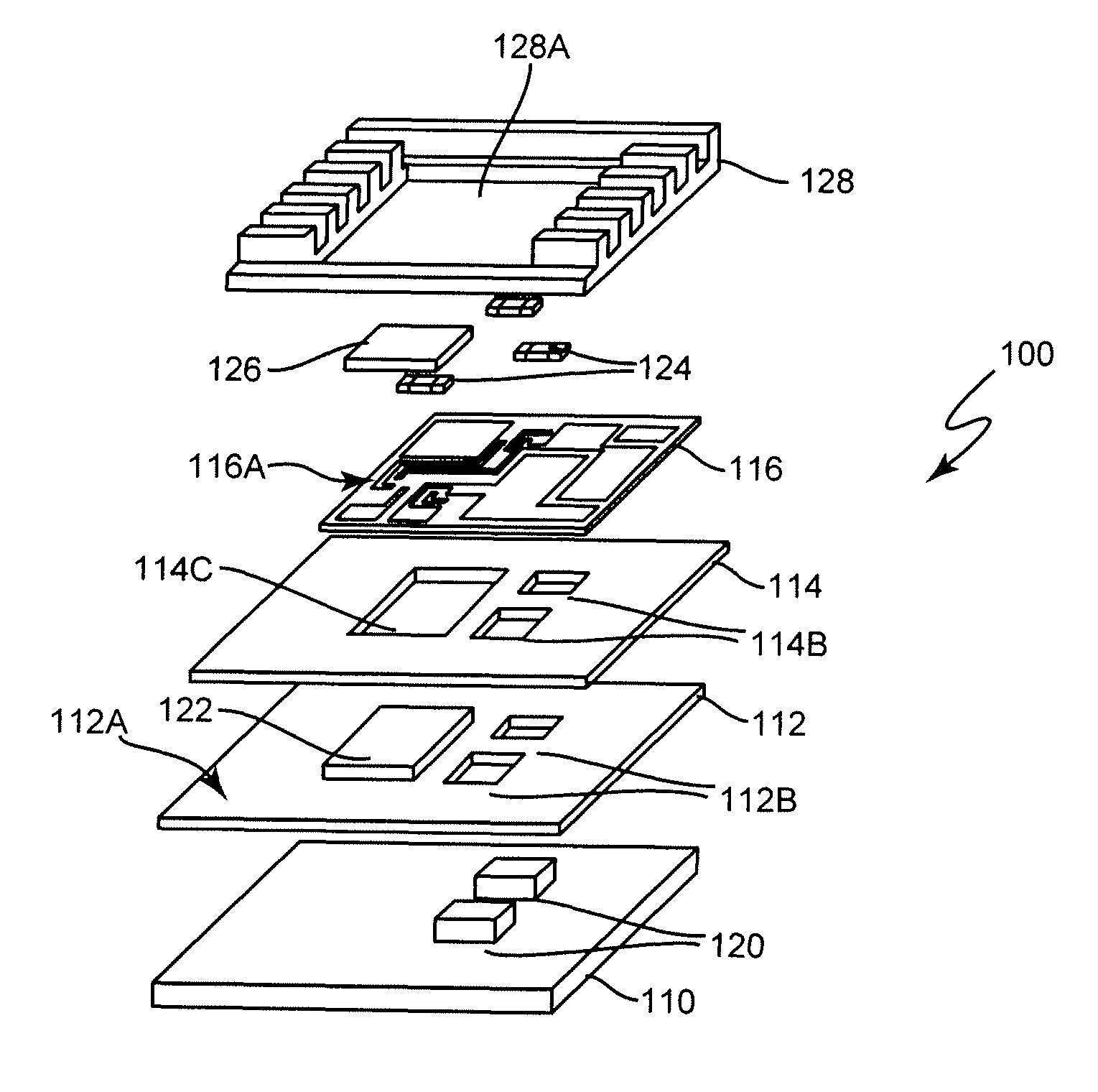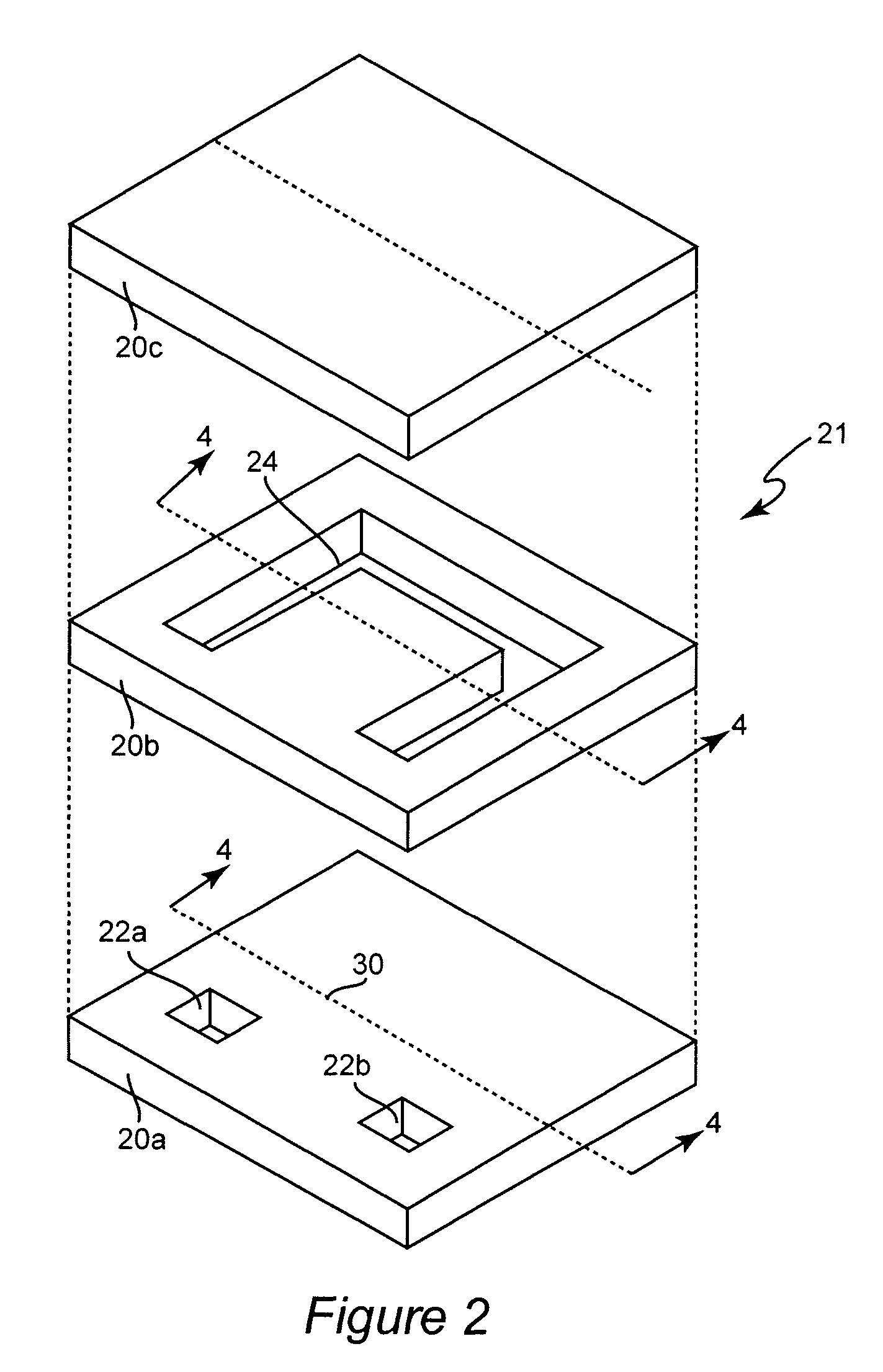Method and apparatus for three-dimensional integration of embedded power module
a power module and three-dimensional integration technology, applied in the direction of process and machine control, magnetic bodies, instruments, etc., can solve the problems of increasing heat dissipation, inability to implement in the integrated circuit with the actives, and increasing clock speed, so as to reduce packaging overhead, improve electrical efficiency, and reduce packaging overhead
- Summary
- Abstract
- Description
- Claims
- Application Information
AI Technical Summary
Benefits of technology
Problems solved by technology
Method used
Image
Examples
Embodiment Construction
[0051]The following detailed description of the invention is in reference to accompanying drawings, which form a part of this description but are only illustrative examples of various embodiments in which the invention may be practiced. The invention is not limited, however, to the specific examples described herein and / or depicted by the attached drawings. Other configurations and arrangements embodying or practicing the present invention can, upon reading this description, be readily implemented by persons skilled in the arts.
[0052]In the drawings, like numerals appearing in different drawings, either of the same or different embodiments of the invention, reference functional or system blocks that are, or may be, identical or substantially identical between the different drawings.
[0053]Various embodiments of the invention, although different, are not necessarily mutually exclusive. For example, a particular feature, function, act or characteristic described in one embodiment may, ...
PUM
| Property | Measurement | Unit |
|---|---|---|
| thick | aaaaa | aaaaa |
| thick | aaaaa | aaaaa |
| thick | aaaaa | aaaaa |
Abstract
Description
Claims
Application Information
 Login to View More
Login to View More - R&D
- Intellectual Property
- Life Sciences
- Materials
- Tech Scout
- Unparalleled Data Quality
- Higher Quality Content
- 60% Fewer Hallucinations
Browse by: Latest US Patents, China's latest patents, Technical Efficacy Thesaurus, Application Domain, Technology Topic, Popular Technical Reports.
© 2025 PatSnap. All rights reserved.Legal|Privacy policy|Modern Slavery Act Transparency Statement|Sitemap|About US| Contact US: help@patsnap.com



